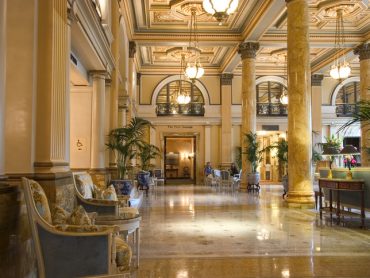10 Pet Peeves of Hotel Fitness Centers
With the desire for healthy eating, exercise and all-round wellness on the rise, creating an environment conducive for guests at your hotel’s fitness facilities is paramount. As a road warrior, staying at some 35+ different properties annually, I’ve had the opportunity to experience a wide variety of these amenities. I don’t contend to be an expert on fitness equipment – this likely requires a PhD in bio-mechanics – but it is nevertheless easy to spot where some hotels are excelling in this regard over others. On this basis, here is my top ten list of pet peeves with hotel fitness centers.
1. Not being open when I want to exercise. I am an early riser. A fitness center that is not open is like candy in a window of a closed store. You drool, but cannot get satisfaction. A 7am opening is way too late; 5am is better. As for wrapping up for the day, 11pm or midnight work best.
2. Stale air and poor ventilation. The worst experience was a fitness center which seemed to be crammed between the hot tub and the laundry. If the humidity is such that you cannot breathe, how can you be realistically capable of working out and unleash pounds of sweat? Further, there’s nothing as unappetizing as sucking in another person’s unrestrained body odor or cheap spray deodorant because the ventilation systems aren’t flowing adequately.
3. Equipment that does not work properly. Frustrating but true, the more sophisticated the equipment, the more complex the programming and higher repair requirements. Most modern cardio bikes and treadmills come with built in plugs for mobile devices as well as televisions – ensure that these function perfectly. Also, clean and lubricate weighted and cable machines so the resistance is fluid.
4. Too much equipment. It seems that many operators think they can cram in as much as the space will fit and therefore improve their fitness centers’ overall usage. In doing so, typically space allocated for stretching and free body exercises are eliminated – let alone performing routines with a partner. You must find a balance as any good fitness freak will tell you that flexibility movements are easily as important as resistance training.
5. Rust. Oxidizing metals look great on rooftops but anything that rusts has no place in your fitness center. It reflects poor maintenance and poor ventilation. This is particularly noticeable on cheap free weights.
6. Cheap or thin towels. Towels should be thick so that only one is needed to absorb all the sweat produced during the average one or two hour workout. Moreover, these should be comprised of a material soft enough to rub over one’s face without agitation.
7. Clocks everywhere. Yes, clocks are great for keeping track of time, especially during interval training. But nowadays, everyone brings their mobile devices with them to the gym for this task (amongst others), so why do you still need to have clocks on every wall?
8. Anything but perfect cleanliness. I’m not just talking about a wipe down at the end of the day, but consummate spot checking. Many people rudely don’t return dumbbells to their proper resting place and having to trawl the gym floor to locate a matching pair shouldn’t be a part of any guest’s workout. Additionally, that giant sweat imprint on the mats doesn’t exactly say “Lay down here, please.”
9. Roaming staff and trainers. Oftentimes, it’s easy for all the gym staff to perform their basic duties then cluster in some remote corner out of direct eye contact with members. Think of the gym as you would a restaurant; staff members should constantly be on patrol, for cleaning spot checks, to occasionally offer exercise tips and, most importantly, to make themselves available for conversation with guests.
10. Surcharges for use. This is a non-starter as is the same for any drip pricing tactic. Just like charging $4.99 for a bottle of water, hotels should be encouraging fitness rather than throwing up barriers for its usage. It comes to the guest’s experience – if you put up a barrier then it lessens a visitor’s overall degree of exposure with your property and thereby lessens the impression you can make.
(Article by Larry Mogelonsky, originally published on eHotelier on November 20, 2014)




